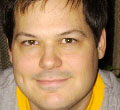
In fact, Angels & Demons was written in 2000 and preceded The Da Vinci Code by three years. But Ron Howard-who returns to direct the latest intellectual thriller-decided to tackle the two projects in reverse order, presumably because of The Da Vinci Code’s more scintillating story line. He also retained Tom Hanks’ services as Langdon for this prequel turned sequel that hit theatres this past weekend.
In the book, Langdon is called by Maximilian Kohler, the director of CERN (the European Organization for Nuclear Research-a real life laboratory for particle physics located in Geneva, Switzerland) after one of his scientists Leonardo Vettra is murdered and branded with the mark of a legendary secret organization known as the Illuminati.
In the movie, Camerlengo Patrick McKenna (Carlo Ventresca from the book and played by Ewan McGregor) calls Langdon to Rome after the Pope dies and the four Preferiti (the cardinals in line for the Papal crown) become targets of an unknown assassin. This backwards storytelling devise creates a clever bit of irony as the leaders of the Catholic Church (exposed as frauds in The Da Vinci Code) are forced to rely on the man who uncovered its supposed lies about the divinity of Christ (Brown writes that Jesus was a mortal man who married and had children).
To make matters worse, a canister of antimatter has been stolen from CERN and hidden inside Vatican City. The antimatter, which is highly unstable outside of its suspended vacuum, will cause a devastating explosion within 24 hours of removal.
This leads Langdon and Vettra’s daughter Vittoria (Ayelet Zurer) on a fast-paced trek through the Vatican’s historic landmarks and mysterious hidden passageways. They attempt to save the lives of the cardinals while frantically searching for the missing antimatter.
Unlike The Da Vinci Code, there haven’t been a slew of books explaining or attempting to debunk claims made by Angels & Demons. That fact alone suggests the film adaptation will be far less controversial as well. It doesn’t, however, preclude Angels & Demons from having some serious flaws that might lead people down a dangerous path of misinformation.
While The Da Vinci Code made direct assertions that challenged core biblical truths, the message found in Angels & Demons is much more subtle and involves an age-old tug-of-war that pits organized religion against science. The traditionalists on both sides argue that one community threatens the other. For instance, some of the religious leaders in the story believe that scientific breakthroughs diminish man’s need for God while the scientific purists accuse the Church of suppressing it’s findings in an effort to maintain control of any moral debate.
Brown seems open to the idea that miracles can happen but leans more in the direction of science as the creator of such happenings while intimating that religious leaders might be compelled to feign divine intervention in order to further the cause of faith.
This holds true late in the story when Camerlengo makes an amazing aerial escape after saving St. Peter’s Basilica and the people gathered there from the antimatter bomb. His misguided attempt to manufacture a miracle is portrayed as delusional and self-serving.
Of course, what would a Robert Langdon adventure be without at least one swipe at the Bible? In Angels & Demons, it’s the tenet of Creation that serves as target practice. Prior to his murder, Vettra had hoped to find a connection between science and God. This concept was borderline blasphemy to the purist scientists at CERN and was equally disconcerting to the camerlengo who feared that such a revelation would continue to lead people further away from their belief in God as the ultimate power source.
Vettra also claimed to be on the verge of recreating the so-called “Big Bang” (ironically made famous by Belgian Roman Catholic priest and professor of physics Georges Lemaitre) that many scientists believe produced matter. Christian scientists have differing opinions on the Big Bang Theory-some believing it happened when God “created the heavens and the earth” (Genesis 1:3), and some believing it to be a myth disguised as scientific fact.
Just like he did during the firestorm surrounding The Da Vinci Code, Brown claims that Angels & Demons is not anti-Catholic or even inherently religious for that matter. He believes that science and religion are the same things: “manifestations of man’s quest to understand the divine.”
Strangely, the antagonist of Angels & Demons is ultimately correct in his assertion that scientific advancements and technological breakthroughs threaten to pull man even further away from God-not because the two are competing forces but rather because the two are inextricably joined together.
There’s an inherent conflict between logical thinking and the omnipotent power of God, whom you might say is the original scientist. How do you explain a Supreme Being that created countless galaxies with His words and gave life to all living things with His breath?
God doesn’t need to be validated by science, and as hard as some may try, science will never disprove His existence either. Likewise, those of us who believe in the sovereignty of God and the divinity of His son Jesus should not fear science (or Dan Brown’s humanistic inspired stories, for that matter). We should instead see the beauty of our Creator’s handy work in every direction we may turn.
Angels & Demons will no doubt supply another blockbuster hit for Dan Brown and his Hollywood cohorts. It might even subconsciously impact some people’s belief in God. This should come as no surprise to those who have studied 2 Timothy 3 in which the Apostle Paul prophecies that in Earth’s final days there will be people who are “always learning but never able to acknowledge the truth.”
Chad Bonham is a freelance author, journalist and television and documentary producer from Broken Arrow, Okla. He has authored several books including a four-book FCA series (Regal Books) and is the coordinating producer on a forthcoming documentary called Choosing Life.














































